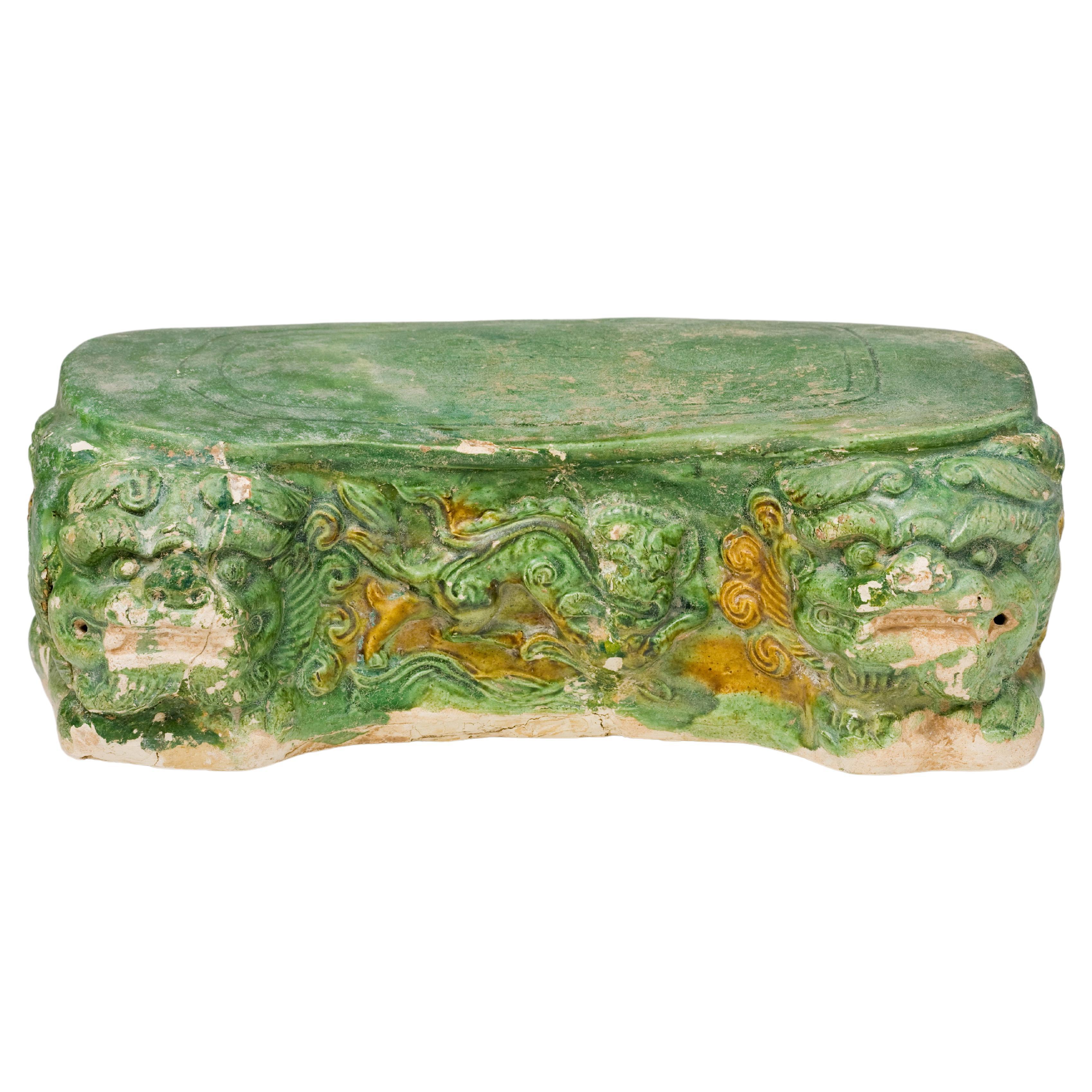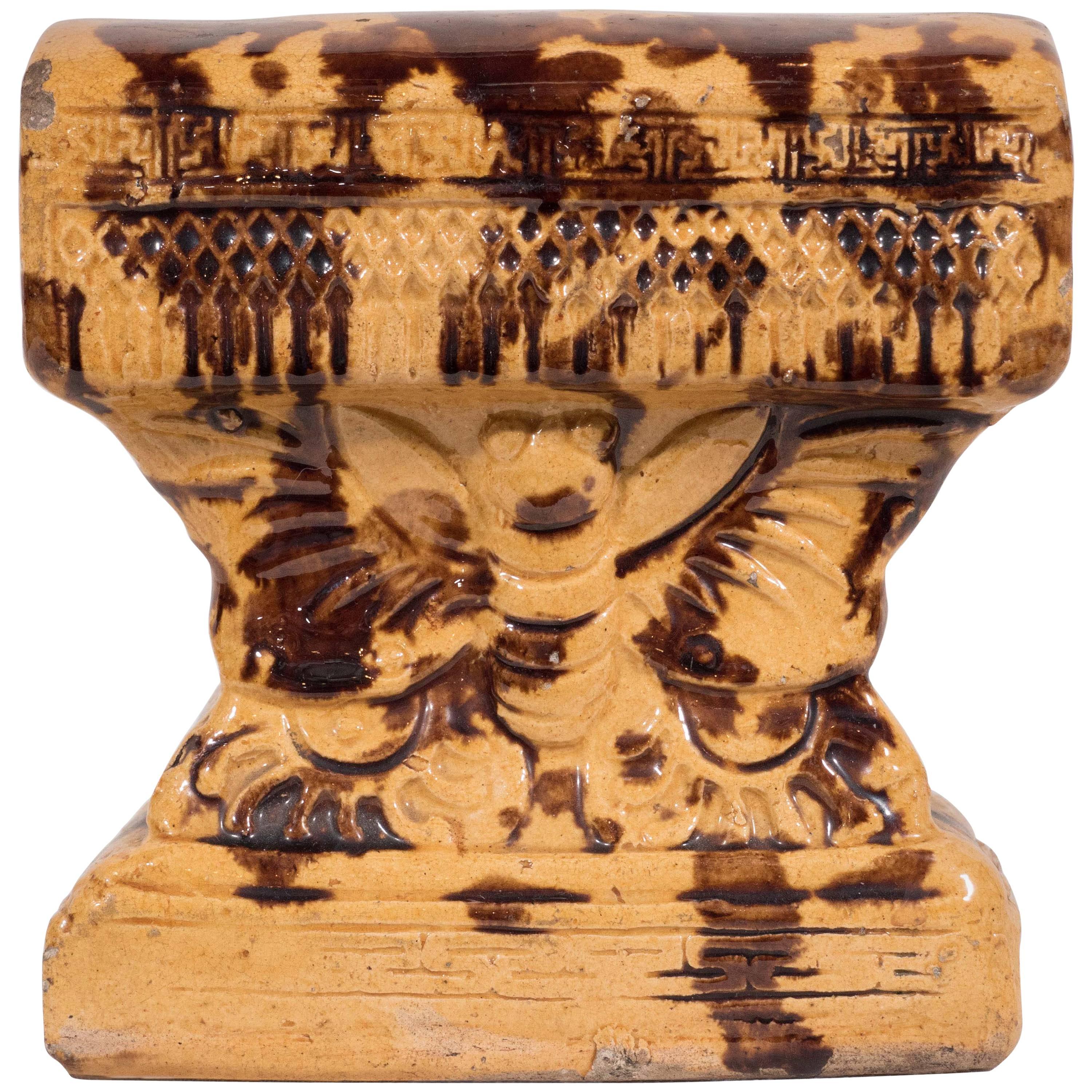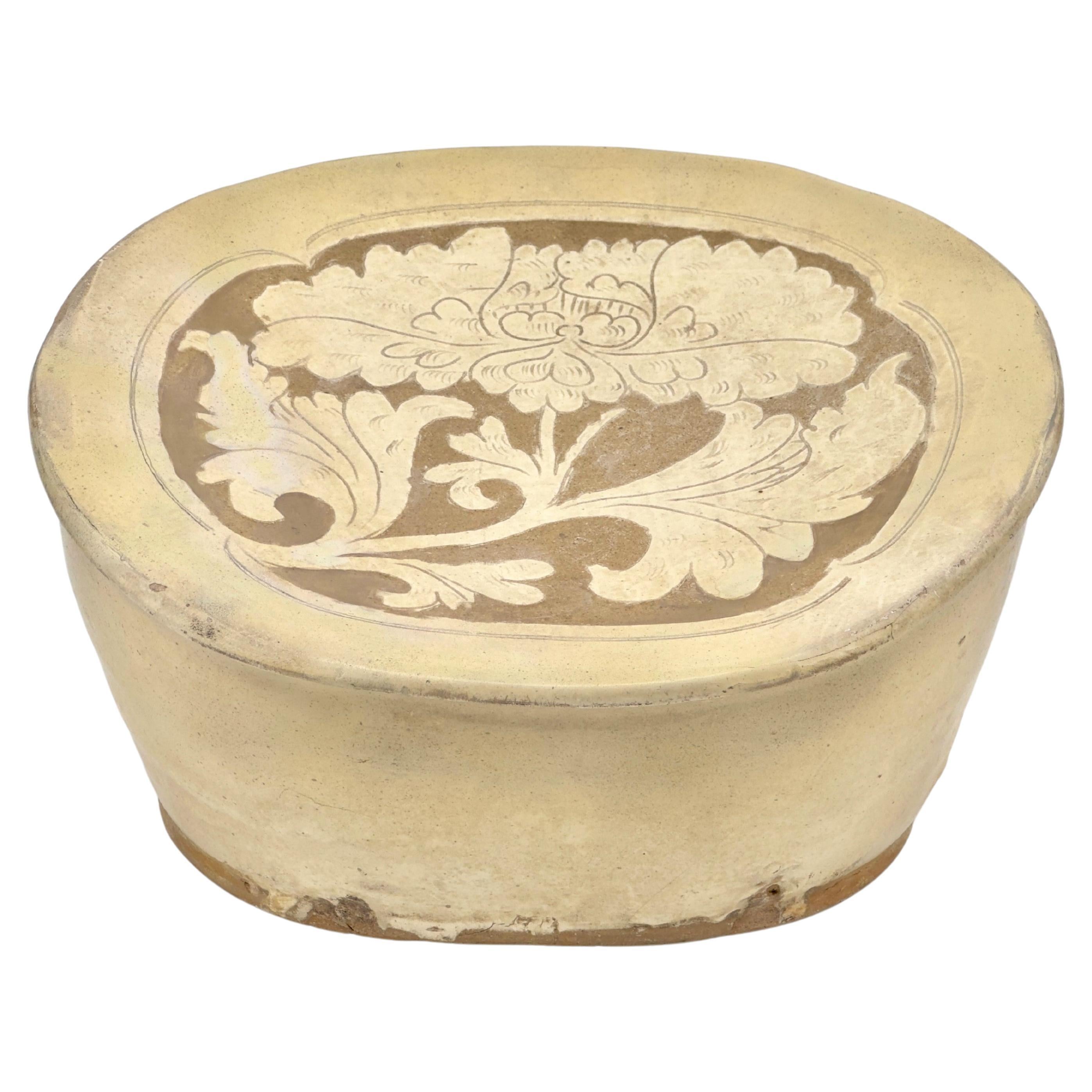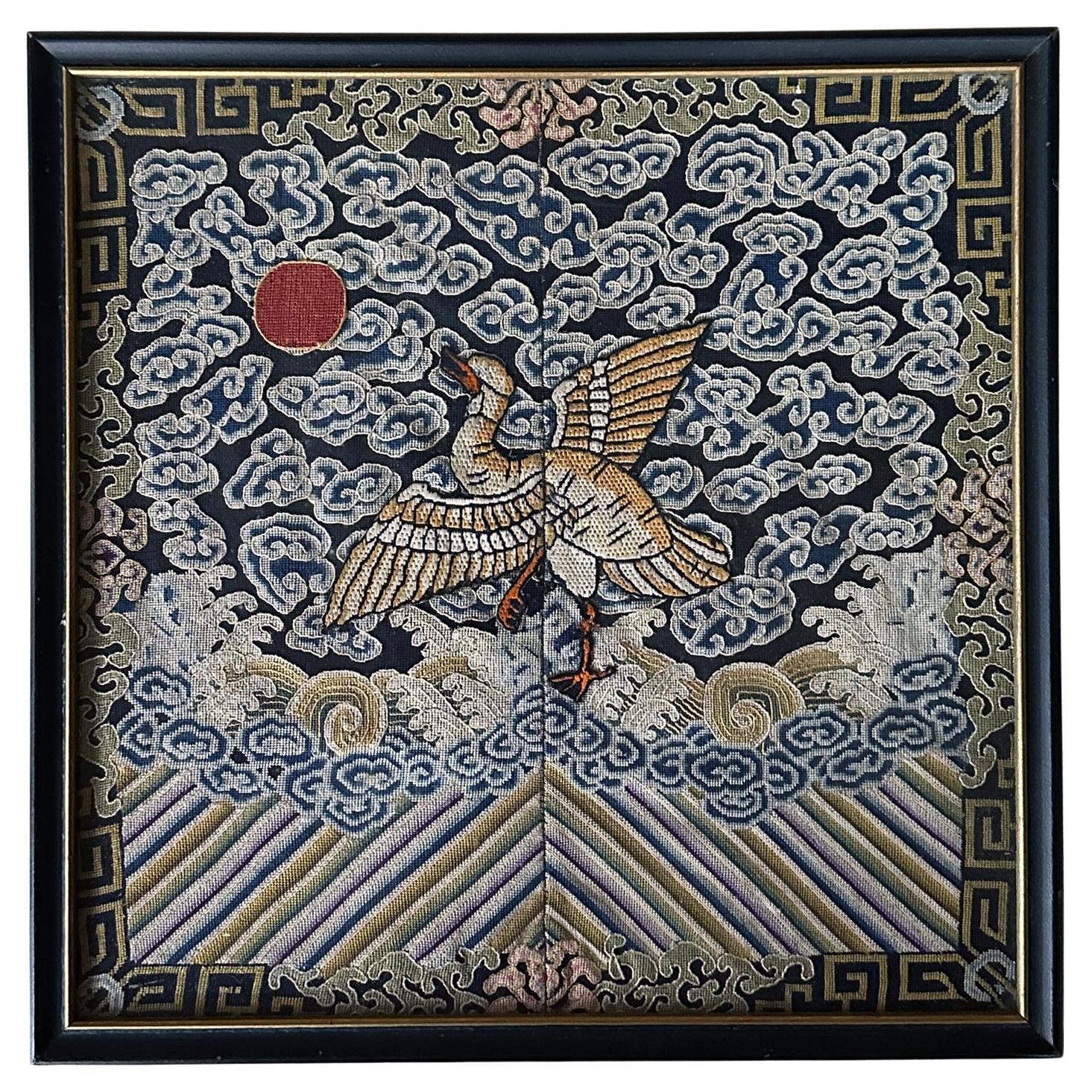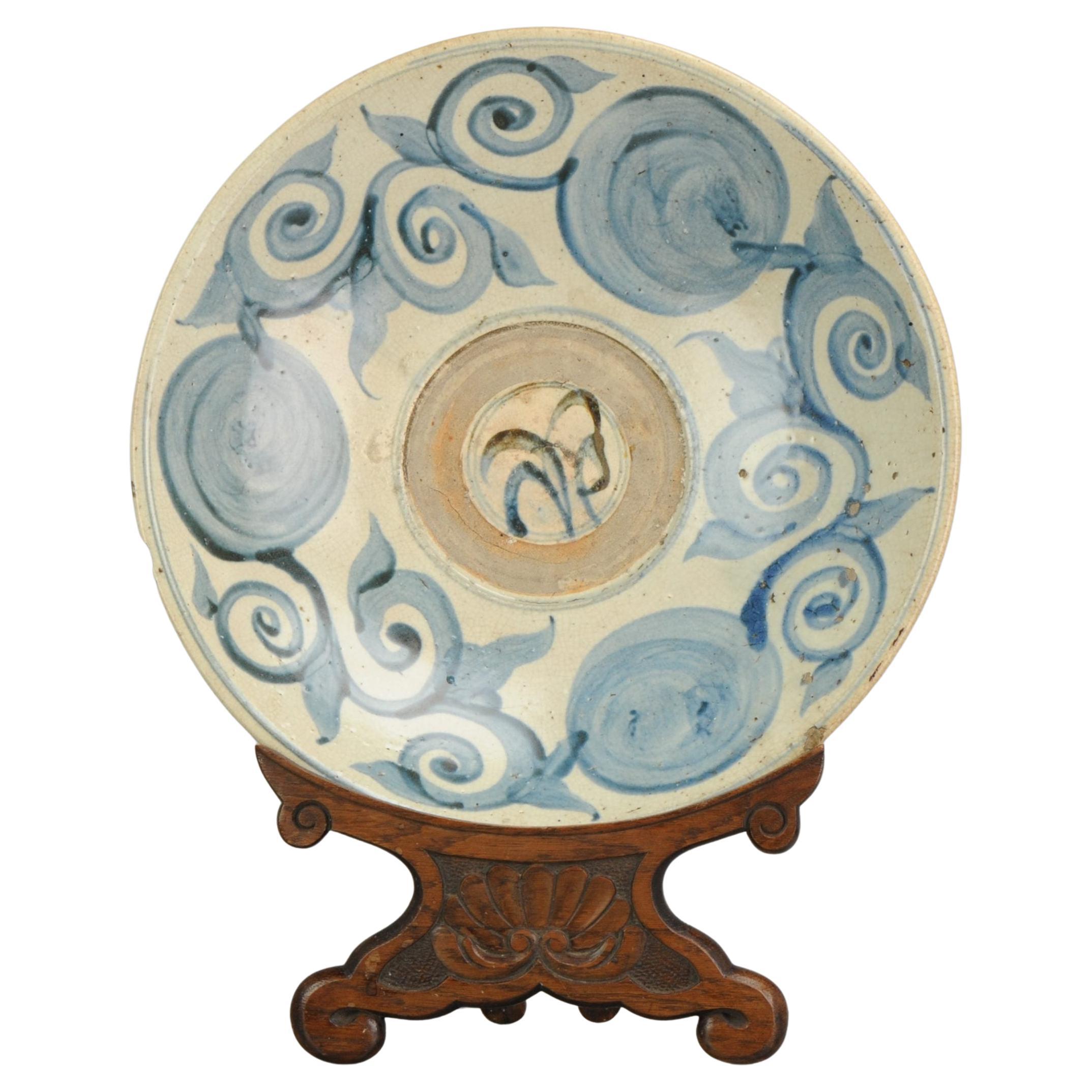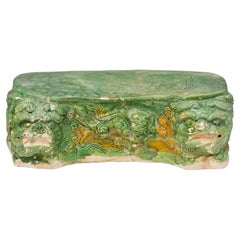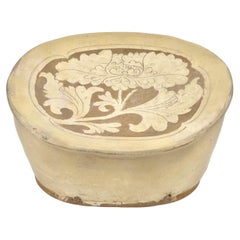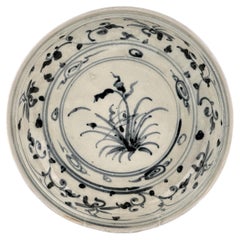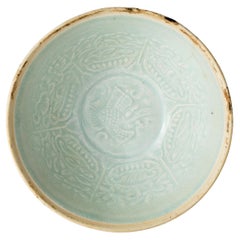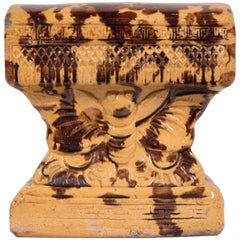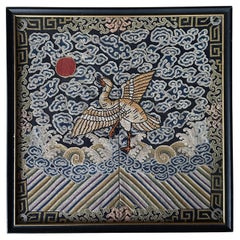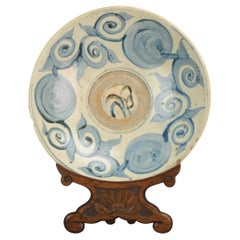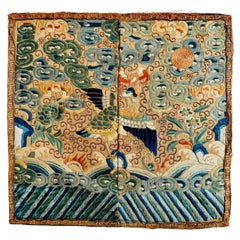Items Similar to Rare Cizhou 'Mandarin duck and Reishi mushroom' Painted Pillow, Jin-Song Dynasty
Want more images or videos?
Request additional images or videos from the seller
1 of 15
Rare Cizhou 'Mandarin duck and Reishi mushroom' Painted Pillow, Jin-Song Dynasty
$10,680
$17,80040% Off
£8,103.74
£13,506.2340% Off
€9,265.90
€15,443.1740% Off
CA$14,917.06
CA$24,861.7740% Off
A$16,585.75
A$27,642.9140% Off
CHF 8,660.16
CHF 14,433.6040% Off
MX$201,888.91
MX$336,481.5240% Off
NOK 110,499.89
NOK 184,166.4840% Off
SEK 103,533.11
SEK 172,555.1940% Off
DKK 69,153.12
DKK 115,255.2040% Off
Shipping
Retrieving quote...The 1stDibs Promise:
Authenticity Guarantee,
Money-Back Guarantee,
24-Hour Cancellation
About the Item
Mandarin ducks symbolize eternal love and fidelity in East Asian culture, often representing marital harmony as they are believed to mate for life. Reishi mushrooms, known as symbols of longevity and health, are revered in traditional Asian medicine for their association with immortality and have been used for centuries to promote vitality and strengthen the immune system.
The orange glaze is commonly found on Cizhou-type tiger pillows. The attached materials indicate that this tiger pillow is from the same period and shares the same color tone as the one housed in the Baoji Bronzeware Museum, a national museum located in Shaanxi Province. Considering the glaze color, painting style, and shape, it is speculated that this piece was used by the imperial court.
Period : Jin-Song Dynasty(12-13th century)
Type : Pillow
Medium : Cizhou Ware
Size : 28 cm(Width), 30cm(Vertical), 16cm(Height)
Provenance : Acquired in late 1990s from Hongkong
Reference
1) Christies Hongkong 9 OCT 2019 - The Pavilion Sale - Chinese Ceramics and Works of Art Including the Quek Kiok Lee Collection
(Price realised : HKD 225,000 / Type : related)
2) The Baoji Bronzeware Museum, Shaanxi Province - Tiger Cizhou Pillow
(Type : related)
3) Christies Newyork 22–23 SEP 2022 - Important Chinese Ceramics and Works of Art - Lot 934
(Price realised : USD 18,900 / Type : related)
* Cizhou Ware
Cizhou is the name given to a number of stonewares, grey or buff, of varying degrees of hardness, with painted, incised or carved decoration on a clay slip. These stonewares were not only made in the region of Cizhou, Hebei Province, but in several provinces of China during the Song, Yuan and Ming periods. The great centres of production were in the north of China in the provinces of Hebei, Henan and Shanxi.
Cizhou wares seem to have been very popular, made for a clientèle of rich merchants, at a period when the paintings of famous artists adorned the walls of tea houses of the capital. While this type of pottery did not apparently attract Chinese collectors of the 18th and 19th centuries, it was much appreciated by the Japanese as a kind of folk art, for its rustic look. Nowadays Cizhou fetch very high prices at public auctions.
In the past fifty years, kilns producing Cizhou wares have been identified and excavated. This has made it possible to know the exact origin of certain types and to study the evolution of the ware.
Song potters used several methods of decorating Cizhou: vases, jars, pots, boxes and pillows. Champleve decoration appears at the beginning of the Song period in Henan at Dengfengxian and at Xiuwu. This method consisted of covering the vessel with a white slip, then carving and incising the design as to expose the brown of the body below. The whole surface was then glazed. After firing, the brown of the body formed a striking contrast with that of the glaze covering the white slip. Sometimes the design stands out against a ground of little circles stamped with a metal or bamboo tool. This decoration was often used on Tang metalwork. A variant of the technique used in the 11th century consisted of incising the little circles through the slip, then filling the lines with brick-red paint. The object, generally a pillow or cup, was then glazed. In another type of decoration called sgraffito, two layers of slip were placed one over the other, a brown slip, for example, over a white one, or vice versa over the parts destined for decoration; then the design was drawn by incising and scratching the upper layer, and the whole thing was covered with a transparent glaze.
- Dimensions:Height: 6.3 in (16 cm)Diameter: 11.82 in (30 cm)
- Materials and Techniques:Pottery,Glazed
- Place of Origin:
- Period:
- Date of Manufacture:12-13th century
- Condition:Minor fading. Minor chips on surface.
- Seller Location:seoul, KR
- Reference Number:1stDibs: LU9577241161372
About the Seller
4.8
Gold Seller
Premium sellers maintaining a 4.3+ rating and 24-hour response times
Established in 1999
1stDibs seller since 2023
38 sales on 1stDibs
Typical response time: <1 hour
- ShippingRetrieving quote...Shipping from: seoul, Korea South
- Return Policy
Authenticity Guarantee
In the unlikely event there’s an issue with an item’s authenticity, contact us within 1 year for a full refund. DetailsMoney-Back Guarantee
If your item is not as described, is damaged in transit, or does not arrive, contact us within 7 days for a full refund. Details24-Hour Cancellation
You have a 24-hour grace period in which to reconsider your purchase, with no questions asked.Vetted Professional Sellers
Our world-class sellers must adhere to strict standards for service and quality, maintaining the integrity of our listings.Price-Match Guarantee
If you find that a seller listed the same item for a lower price elsewhere, we’ll match it.Trusted Global Delivery
Our best-in-class carrier network provides specialized shipping options worldwide, including custom delivery.More From This Seller
View AllA Sancai-glazed pottery 'Haitai' Pillow, Tang dynasty
Located in seoul, KR
The pillow is intricately decorated with a vibrant pattern, demonstrating the craftsmanship and artistic sensibilities of the period. The Haitai is a creature from Chinese mythology,...
Category
Antique 15th Century and Earlier Hong Kong Tang Antiquities
Materials
Earthenware, Pottery
$2,950 Sale Price
50% Off
Cizhou carved bean-shaped pillow, Song-Jin Dynasty, 11th-12th century
Located in seoul, KR
Crafted from fine clay, the pillow's surface boasts a sophisticated carved design featuring a floral motif that is both symmetrical and organic. The interplay of the earthy tones and...
Category
Antique 15th Century and Earlier Hong Kong Chinoiserie Antiquities
Materials
Stoneware
$2,535 Sale Price
35% Off
Annamese Stoneware Dish with Lotus Motif, 15-16th Century Vietnam, Le Dynasty
Located in seoul, KR
This Annamese ceramic dish features a central lotus motif, enclosed by a thin circular border. The rim is adorned with intertwining vine patterns and swirling motifs. The dish has a gently curved form with a well-proportioned depth and a neatly finished rim.
Dates : 15th century Le Dynasty
Region : North Annam, Vietnam
Type : Dish
Found/Acquired : Southeast Asia , South China Sea, Hoi An Ship
Reference : Double checked with reference to the original catalogue
Butterfield Treasures Hoi An Hoard Auction Catalogs / San Francisco Butterfields 2000
* Vietnamese trade ceramics
Around the mid-14th century, Vietnam developed its ceramics production technology by producing blue and white porcelain, and began to export it overseas. During this period, China Ming Dynasty implemented a policy of lifting the ban from 1371 to 1657 and restricted foreign trade. This served as a good opportunity in the trade history of Vietnamese ceramics, and ceramic exports...
Category
Antique 15th Century and Earlier Vietnamese Ming Antiquities
Materials
Stoneware
$1,393 Sale Price
30% Off
Qingbai Bowl with carving of crane, Song Dynasty
Located in seoul, KR
The crane, a traditional symbol of longevity and auspiciousness, is prominently placed at the center, creating a harmonious and aesthetically balanced effect. The border of the dish ...
Category
Antique 15th Century and Earlier Hong Kong Chinese Export Antiquities
Materials
Porcelain
$1,192 Sale Price
20% Off
Three-glazed Earthenware dish circa 1725, Qing Dynasty, Yongzheng Reign
Located in seoul, KR
Painted with yellow, brown and green glazes against the straw-glazed ground, the cavettos with a broad brown-glazed band, the exteriors green-glazed.
Period : Qing Dynasty, Yongzhen...
Category
Antique 1720s Vietnamese Qing Decorative Bowls
Materials
Earthenware
Persian style Annamese stoneware, late 15th century
Located in seoul, KR
Stoneware decorated with Persian-style colors and patterns, and it is highly likely that this Annamese pottery intended for export was produced to meet Middle Eastern demand.
Dates ...
Category
Antique 15th Century and Earlier Vietnamese Antiquities
Materials
Stoneware
$1,554 Sale Price
40% Off
You May Also Like
Antique Chinese Stoneware Pillow 19th Century
Located in Katonah, NY
Antique Chinese pillows were made from a wide range of materials, including bamboo, jade, porcelain, and wood. Traditionally solid, they were sometimes used with softer fabric over them. We are pleased to offer this pillow, which is decorated with brown glazes allowed to run over beige-colored stoneware. On both sides, the impressed design is a honeybee and honey combs symbolizing a wish for sweet dreams. Along the top and bottom of the pillow are traditional Chinese cloud collar...
Category
Antique 19th Century Chinese Qing Ceramics
Materials
Stoneware
Antique Chinese Kesi Fourth Rank Badges Qing Dynasty
Located in Atlanta, GA
A fine silk kesi civil rank badge panel (known in Chinese as Buzi) framed and glazed. The fourth rank panel feature borders of fret archaic key and are cente...
Category
Antique 19th Century Chinese Qing Textiles
Materials
Silk, Giltwood
Vietnamese Earthenware Dish Charger Flowers Motiff Swatow Style, 17th Century
Located in Amsterdam, Noord Holland
Large and very nice Blue and White Charger/Dish from the Jiajing Period This type of dish, with undecorated sides and flowing, somewhat 'fatty' glaze and greyish blue colour characte...
Category
Antique 17th Century Qing Dinner Plates
Materials
Porcelain
$1,916 Sale Price
20% Off
19th Century Civil Rank Badge with Mandarin Duck
Located in Atlanta, GA
Qing Dynasty silk embroidery rank badge decorated with a Mandarin duck, denoting an official of the Seventh Rank. Badges with ducks are re...
Category
Antique 19th Century Chinese Textiles
Materials
Silk
Dragon Ceramic Pillow Long Quan Kiln
Located in Somis, CA
A stunning Song Dynasty porcelain pillow, crafted by the prestigious Long Quan kiln. This historic kiln, dating back over 1600 years, is renowned for its exquisite celadon and lotus ...
Category
20th Century Chinese Ceramics
Materials
Ceramic
$350 Sale Price / item
36% Off
Yuan Style Mandarin Duck Lotus Pond Charger
Located in Savannah, GA
A large Yuan style Madarin duck lotus pond charger.
21 inches wide by 3 ½ inches tall
Stand not included.
Category
Mid-20th Century Chinese Qing Ceramics
Materials
Porcelain
More Ways To Browse
13th Century Furniture
Antique Pottery Names
Song Dynasty
Chinese Song Dynasty
Song Dynasty Furniture
Asian Metal Wall Art
Antique Pottery Stamps
Antique Artist Paint Box
11th Century Furniture
Song Dynasty Ceramics
Chinese Ceramics Song Dynasty
Rare Antique Asian Vases
Japanese Stamps Rare
Chinese Orange Glaze
Song Dynasty Vase
Ming Dynasty Pottery
Ming Dynasty Vases
Asian Box On Stand
